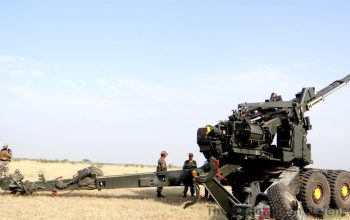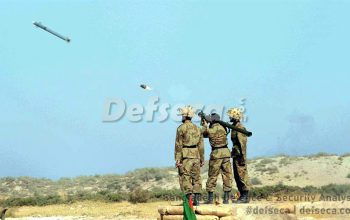The Myanmar Navy is on course to receiving its first ever submarine after years of failed attempts at purchasing North Korean, Chinese and Russian submarines. The Indian Navy will transfer one of its aged Kilo-class submarines, INS Sindhuvir (S58) originally commissioned in to the Indian Navy on 26 August 1988.
The 2354 ton diesel-electric submarine has a length of 72.6 metres and has a maximum speed of 10 knots when surfaced, 9 knots in snorkel mode and 17 knots when submerged. The Kilo-class submarine has a range of 6,000 nautical miles when snorting and 400 miles when submerged.
A crew of 52 personnel operate the submarine which can stay at sea for 45 days straight.
The maximum operational depth for the submarine is 240 metres however it can dive to a maximum depth of 300 metres if required.
Armaments include Type 53-65M passive wake homing torpedoes and TEST 71/76 anti-submarine active/passive homing torpedoes Up to 24 DM-1 mines can be carried in lieu of torpedoes.
The Type 53-65M has a maximum range of 22 km at a speed of 44 knots. The warhead contains 307.6 kg of high explosives. It was first inducted in 1969 by the Soviet Navy. The TEST-71 is a variant of the Type 53-65 heavy torpedo.
The INS Sindhuvir (S58) will be delivered to the Myanmar Navy by the end of 2019 after undergoing refit at the Hindustan Shipyard Limited (HSL) in Vizag.
Naval arms race in the Bay of Bengal
A naval arms race could is occurring in the Bay of Bengal as both Bangladesh and Myanmar expand their respective naval capabilities. The Bangladesh Navy purchased two Type 035G diesel-electric attack submarines from China under a Government-To-Government agreement for only $203 million. Later on May 2019 the Chinese supplied the Bangladesh Navy with new generation ET-40 torpedoes for use with the upgraded Ming class submarines. A Chinese company also secured a contract to built a $1.22 billion submarine base that includes maintenance, repair and overhauling facilities enabling the Bangladesh Navy to repair its existing Type 035G submarines. It is also a strong indicator that the Bangladesh Navy will pursue additional Chinese submarines with Dhaka interested to purchase three to four new generation AIP equipped submarines from China.
Naval trade between Beijing and Dhaka has been going strong of late with China Shipbuilding & Offshore International Co., Ltd. (CSOC) already supplying 4 newly built Shadhinata class guided missile corvettes, which are based on the mass produced Type 56 (Jiangdao class). The same company supplied two missile-armed LPC-1, which are essentially light corvettes. They also provided design and material package to Khulna Shipyard (an enterprise of the Bangladesh Navy) to build two Durgam-class anti-submarine warfare LPC’s based on the LPC-1. Dozens of smaller patrol craft are being built for the Bangladesh Navy and Coast Guard with cooperation of CSOC.
Meanwhile the Indian counterparts have supplied Myanmar Navy with shipbuilding know-how and components such as hull mounted sonar systems, anti-submarine warfare light torpedoes and surveillance radar for Myanmar Navy’s indigenously built guided missile frigates.
India also supplied British-made maritime patrol aircraft to the Myanmar Navy however the transfer of the refurbished submarines are the most symbolic representation of the strong relations enjoyed by India and Myanmar today.
Dhaka has never commented on the burgeoning defence ties between India and Myanmar even though it is hosting 1.2 million Burmese refugees in its territory after members of the Rohingya ethnic group comprising of mostly Muslims and a minority Hindu community fled Myanmar after deadly military operations resulted in targeted atrocities against the ethnicity by Burmese government forces and Buddhist terror groups.
The response from Dhaka might come in the form of further strengthening defence ties with its long time strategic partner – the Chinese. Beijing is also keen on supplying technology to Chittagong Dry Dock Ltd (CDDL, a Bangladesh Navy owned enterprise) for building large guided missile frigates. Up to 8 guided missile frigates are to be constructed at the facility along with Shadhinata class corvettes.
The ongoing naval expansion by Bangladesh and Myanmar is being watched with great interest by neighbouring countries including Western military and think tanks alike. Dhaka’s assistance towards Myanmar national’s has earned it strong support from Western countries which have banned all arms exports to Myanmar and placed sanctions on its military top brass. Myanmar is counting on its few remaining friends like India to ensure its military programs are not further curtailed due to Western sanctions.



